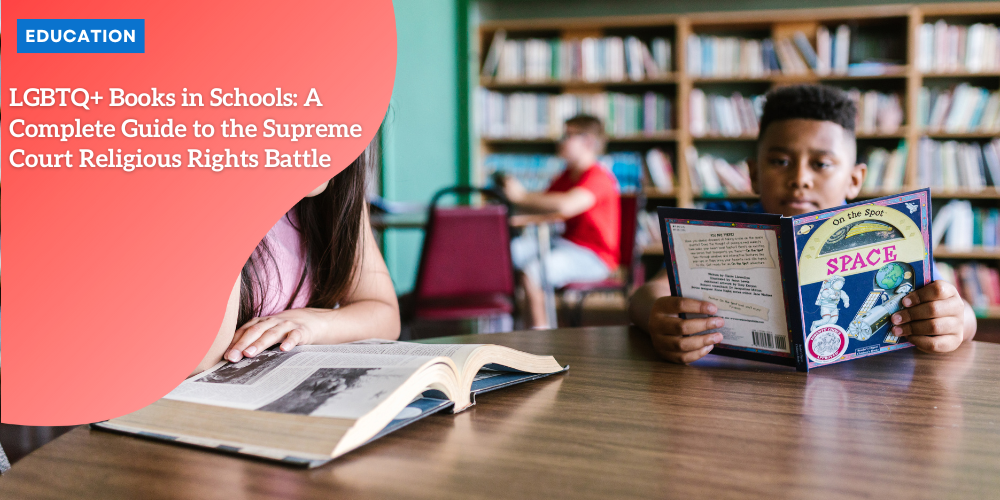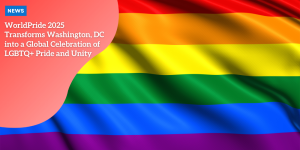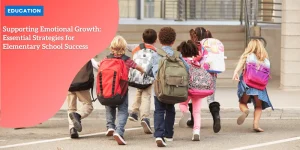LGBTQ+ Books in Schools: A Complete Guide to the Supreme Court Religious Rights Battle

Introduction to Mahmoud v. Taylor: The LGBTQ+ Schoolbooks Supreme Court Case
Six Parents Seeking Opt-Out Rights
Mahmoud v. Taylor is an intriguing and complex case currently before the Supreme Court.
Anúncios
The central issue revolves around six parents, both Catholic and Muslim, who desire to exempt their children from reading books that feature LGBTQ+ characters.
Their primary concern is that such exposure goes against their religious beliefs and infringes on their First Amendment rights.
These parents insist that they should have the right to direct the religious upbringing of their children and seek accommodations to remove them from classroom settings that involve concepts contrary to their faith.
Anúncios
The First Amendment Religious Rights Claim
The crux of the matter lies in the interpretation of the First Amendment’s protection of religious freedom.
The plaintiffs argue that requiring their children to participate in readings involving LGBTQ+ characters places an undue burden on their religious exercise.
They believe that the exposure itself is contrary to their beliefs and that they should be granted opt-out provisions.
Anúncios
This case explores whether merely being exposed to certain ideas can be considered a violation of religious rights, and if so, how schools must balance those rights with their educational obligations.
Broader Context of Parental Rights Movements
This legal battle does not occur in a vacuum. It is part of a larger national discourse on parental rights in education, amplified by a series of state-level laws colloquially termed “Don’t Say Gay” laws.
These laws restrict classroom discussions on topics related to gender and sexuality and have gained traction in states like Florida, Ohio, and others.
These movements often center on the belief that parents should have greater control over the content their children are exposed to in school, especially concerning sensitive or controversial issues.
Transition
As we delve deeper into the specific books at the heart of this controversy, it becomes essential to understand their intended purpose and how they fit into the educational landscape of Montgomery County Public Schools.
The Books at the Center of the Controversy
LGBTQ+ Storybooks in the Curriculum
Montgomery County Public Schools (MCPS) included several LGBTQ+ storybooks in their curriculum starting in the 2022-2023 school year.
The addition aimed to foster “equity, respect, and civility” among students from prekindergarten through 12th grade.
These books were not designed to explicitly teach about gender and sexuality but were meant to encourage inclusive values and provide representation for diverse family structures.
They became part of classroom read-alouds, individual reading, and other school activities.
Examples of Storybooks Under Question
Among the contested books, some notable examples include a children’s book featuring a puppy that gets lost at a Pride parade, and another book in which a young girl feels nervous about giving a valentine to her same-sex crush.
These stories, though seemingly innocent and focused on general themes of love and identity, have sparked significant debate among parents concerned about their religious upbringing of their children.
Intentions Behind the Book Selections
It’s essential to clarify that these books were included with the primary intention of promoting values such as equity and respect.
They were not meant to provide direct instruction on gender identity or sexuality. The goal was simply to expose students to the diversity present in modern society while fostering a respectful and inclusive school environment.
Montgomery County Public Schools initially permitted students to opt out of readings that parents found objectionable due to their religious beliefs.
However, increasing opt-out requests led to challenges such as high absenteeism and administrative burdens, causing concerns about the potential stigmatization of students who identify with or belong to LGBTQ+ families.
Consequently, in March 2023, MCPS removed opt-out options, prompting the parents’ lawsuit in May of the same year.
The controversy over these storybooks continues to highlight the delicate balance between promoting inclusivity and respecting religious diversity in public education systems across the United States.

Montgomery County’s Policy Change
Montgomery County Public Schools initially had a policy that allowed parents to opt their children out of classroom readings involving LGBTQ+ storybooks.
This approach aimed to respect individual family beliefs while promoting inclusivity.
However, by March 2023, mounting administrative challenges and the potential risk of stigmatizing students led the school district to revise its policy and remove the opt-out option.
Reasons Behind the Policy Change
Administrative Challenges
One significant reason for the policy revision was the administrative complexity that arose from the high volume of opt-out requests.
Managing these requests became increasingly difficult, leading to organizational inefficiencies within the schools.
Absenteeism and Stigmatization
Continuous opt-out requests also resulted in noticeable student absenteeism during such readings.
More critically, the opt-out policy posed the risk of stigmatizing students who felt their family structures were being excluded or deemed controversial.
This could create an environment of isolation and discrimination for children who identified with the content of the books.
Parents’ Lawsuit
Following the policy change, in May 2023, a group of parents sued the Montgomery County Public Schools, alleging that their First Amendment religious rights were being infringed upon.
They argued that the removal of opt-out options forced their children to be exposed to content contrary to their religious beliefs, thus violating their right to direct their children’s religious upbringing.
This lawsuit highlights a complex debate between religious liberty and the need for inclusive educational environments in public schools.
Next, we delve into the historical context of religious freedom within education, examining past court decisions and their impact on current legal landscapes.
| 🧑⚖️ Legal Scenario | Interpretation/Outcome | Impact on Education |
|---|---|---|
| 📜 Pierce v. Society of Sisters (1925) | Affirmed parents’ rights to choose non-public education | Established parental control in educational choices outside public schooling |
| 📚 Wisconsin v. Yoder (1972) | Allowed religious exemption from compulsory schooling for Amish families | Highlighted the constitutional limit of state-imposed education against religious practice |
| 🏳️🌈 Parker v. Hurley (2008) | Rejected claims that exposure to LGBTQ+ topics violates religious freedom | Confirmed that public curriculum need not align with personal religious beliefs |
| ⚖️ Current Debates (e.g. Mahmoud v. Taylor) | Ongoing litigation over curriculum conflicts with religious beliefs | Reinforces tension between religious accommodation and inclusive education |
Legal Arguments from Both Sides
Plaintiffs’ Argument
The plaintiffs in Mahmoud v. Taylor, supported by the Becket Fund for Religious Liberty, assert that parents have the fundamental right to guide the religious upbringing of their children.
They argue that allowing their children to opt out of specific curriculum elements, like readings featuring LGBTQ+ characters, is essential to preserving their First Amendment rights.
Unlike previous precedents, which generally held that mere exposure to diverse ideas does not constitute a religious burden, the plaintiffs insist that their case is an exception due to its unique context concerning religious teachings that conflict with certain portrayed lifestyles.
School District’s Position
Contrary to the plaintiffs’ position, Montgomery County Public Schools argues that exposure to diverse families and characters in storybooks does not infringe upon religious rights.
The schools’ stance is rooted in the belief that offering opt-outs could result in a chaotic and unmanageable classroom environment.
Furthermore, they contend that the curriculum is designed to foster understanding and inclusion rather than challenge personal religious beliefs.
This viewpoint underscores the district’s concern that allowing multiple opt-outs could create logistical complications and undermine efforts at inclusive education.
Religious Animus Debate
Additionally, the plaintiffs cite the precedent set by the 2018 Masterpiece Cakeshop case, asserting that comments made by school board officials constitute ‘religious animus.’
However, legal experts argue the complexity of defining religious animus within educational settings, suggesting that comments made in a non-adjudicatory context, like a school board meeting, may not meet this standard.
This subtle distinction highlights the intricate balance between religious freedom and institutional authority.
As the debate unfolds, the outcome of Mahmoud v. Taylor has the potential to reshape how schools balance religious accommodations with educational inclusivity.
What’s at Stake for Schools and Curriculums
The Challenges of Broad Opt-Out Rights
The potential for granting broad opt-out rights in public school curriculums could dramatically reshape the educational landscape.
If the Supreme Court rules in favor of the plaintiffs in Mahmoud v. Taylor, schools may have to accommodate an influx of opt-out requests based on various religious or philosophical grounds.
This could lead to disparate learning experiences among students, causing logistical nightmares for educators who strive to maintain a cohesive and inclusive classroom environment.
Instead of fostering a unified experience, classrooms might face disruptions, creating scenarios where diverse subjects are challenged and removed based on individual beliefs.
Concerns Over Self-Censorship
One of the most worrisome implications of the case is the possibility of self-censorship.
Teachers and administrators could become overly cautious, avoiding materials that might provoke opt-out claims.
This hesitation might dilute the curricular content, narrowing the range of perspectives presented to students.
In an attempt to sidestep controversy, schools might refrain from including discussions on topics essential for developing critical thinking and empathy, such as diversity in family structures or the history of social movements.
Balancing Inclusive Education with Religious Beliefs
Another crucial aspect at stake is the delicate balance between inclusive education and respecting individual religious beliefs.
Schools aim to create environments where every student feels represented and respected, yet granting opt-outs as requested in the case might inadvertently signal that certain voices are unwelcome or illegitimate.
This tension raises fundamental questions about how schools can honor religious diversity without marginalizing or invalidating the identities of LGBTQ+ students and families.
It is a complex issue that requires careful navigation to ensure that all students receive a comprehensive and respectful education.
As we examine these potential challenges, it becomes apparent that the implications of this case extend far beyond a single school district, impacting how educational systems across the nation could evolve in response to varying degrees of parental control and religious accommodation.
Implications for LGBTQ+ Students and Families
How Opt-Out Policies Might Stigmatize LGBTQ+ Children and Families
Opt-out policies for LGBTQ+ books have significant implications for LGBTQ+ students and their families.
When parents are allowed to exclude their children from reading materials that feature LGBTQ+ characters, it can create an environment where these students feel marginalized and singled out.
By stepping out of class during these readings, children of LGBTQ+ families might feel isolated or different from their peers, exacerbating feelings of stigma and exclusion.
The Tension Between Religious Liberty and LGBTQ+ Inclusion in Public Education
This case underscores a complex challenge in public education: balancing religious liberty with LGBTQ+ inclusion.
Supporters of religious liberty argue that parents should have the right to direct their children’s education without exposure to content that conflicts with their beliefs.
However, advocates for LGBTQ+ inclusion emphasize that it’s crucial for all students to experience diverse representations to foster acceptance and understanding.
Finding this balance is particularly difficult in a diverse community where differing beliefs and needs intersect.
The Social Impact of Removing or Segregating Students During Certain Readings
Segregating students during readings featuring LGBTQ+ content can lead to broader social consequences.
When students are removed or segregated, it sends a message that these topics are controversial or inappropriate, further entrenching harmful stereotypes.
It can also spark uncomfortable conversations among peers, potentially leading to bullying or exclusion of LGBTQ+ students.
The struggle to balance religious freedom with inclusive education is a delicate one, holding significant ramifications for how schools can responsibly educate their students while respecting varying beliefs.
This case illustrates the ongoing debate in public education over creating environments that are both accepting and accommodating without compromising on vital inclusivity principles.
Potential Supreme Court Rulings and Their Consequences
When the Supreme Court rules on Mahmoud v. Taylor, the scope of their decision could vary widely.
A narrow ruling might simply allow opt-outs from LGBTQ+ book readings in Montgomery County Public Schools.
However, the Court could grant a broader decision, setting a precedent for religious families nationwide to demand similar exemptions.
This broader ruling might revolutionize how public schools nationwide handle curriculum disputes based on religious objections.
Recent Court Trends
Recent Supreme Court decisions suggest a possible ruling in favor of the parents.
Cases like Masterpiece Cakeshop v. Colorado Civil Rights Commission (2018) highlighted “religious animus” as a critical factor. In Mahmoud v. Taylor, plaintiffs argue that anti-religious comments made by school board members amount to animus, influencing the case’s outcome.
Possible Narrow Ruling
A narrow ruling could affect only Montgomery County, setting a precedent that specific comments by school boards—similar to those in Masterpiece—even if not acted upon, could demonstrate religious animus.
This would resonate locally but have limited national impact.
Potential Broader Ruling
Alternatively, the Court could broadly interpret the case, allowing religious opt-outs across the country.
This would enable families to demand exemptions, causing potential classroom disruptions and administrative challenges everywhere.
It might lead to an increased number of religious freedom claims, shaking the foundation of public education’s inclusivity.
The Supreme Court’s decision in Mahmoud v. Taylor will inevitably shape the debate around educational content, religious liberty, and parental rights, marking a pivotal moment in American education history.
The Broader Battle Over Parental Rights in Education
Connection to ‘Don’t Say Gay’ Laws
The case of Mahmoud v. Taylor doesn’t exist in isolation; it is part of a larger conversation about parental control in schools.
Recently, ‘Don’t Say Gay’ laws have been enacted in states like Florida and Ohio.
These laws restrict classroom discussion on topics related to gender identity and sexual orientation, reflecting a growing trend toward increased parental rights over educational content.
The Growing Movement for Increased Parental Control
Across the United States, there is a significant push from parents who want more say in what their children learn at school.
This movement is not solely about religious beliefs but includes various concerns over curriculum materials.
Advocates argue that parents should have the right to decide what their children are exposed to in the classroom.
This philosophy is manifesting in legislative actions and school board meetings, where parents are calling for greater involvement and authority.
Book Bans and LGBTQ+ Content
Mahmoud v. Taylor fits into the larger context of book bans targeting LGBTQ+ content.
Across the country, there have been numerous efforts to remove books featuring LGBTQ+ characters or themes from school libraries and curricula.
Critics argue that these efforts amount to censorship and that they undermine the educational objective of fostering an inclusive environment.
The potential Supreme Court ruling in Mahmoud v. Taylor could influence this ongoing battle, either reinforcing or challenging the trend of restricting LGBTQ+ content in schools.
Understanding the broader implications of this case highlights the intense debate over the role of parents versus the state’s educational mandates and the potential impact on both religious and LGBTQ+ communities.
The outcome will have far-reaching consequences for educational policies nationwide.
Conclusion: Balancing Religious Freedom and Educational Equity
Summary of Core Constitutional Questions
The Supreme Court case of Mahmoud v. Taylor poses intricate questions about the intersection of religious freedom, parental rights, and public education.
At its core, the case examines whether parents, based on religious convictions, can exempt their children from reading books featuring LGBTQ+ characters in school.
This situation underscores two crucial constitutional elements: the Free Exercise Clause, which protects religious exercise, and the Establishment Clause, which prevents government entanglement with religion.
Plaintiffs argue they possess the right to control their children’s religious education free from state interference.
Conversely, the school district maintains that diverse representations in the curriculum do not infringe upon religious rights and are essential for fostering an inclusive, respectful learning environment.
The Challenge of Inclusive Educational Environments
Creating inclusive educational environments while respecting religious diversity presents substantial challenges.
Schools aim to embrace equity and representation, reflecting the varied backgrounds of students.
However, accommodating religious objections may lead to complex classroom management scenarios and potential stigmatization of minority groups, including LGBTQ+ students and their families.
Striking a balance calls for nuanced policies that honor both the commitment to diverse educational content and the protection of individual religious beliefs.
Potential Impacts of the Supreme Court’s Decision
The Supreme Court’s ruling in this case could have far-reaching implications for public education in America.
A decision favoring the plaintiffs might empower religious families nationwide to seek exemptions from specific curriculum components, potentially fragmenting educational standards and fostering an environment of self-censorship.
On the other hand, a ruling supporting the school district would uphold the precedence that mere exposure to diverse ideas does not constitute an undue religious burden, preserving the integrity of inclusive educational content.
Either outcome will shape future dialogues on religious freedom and educational equity, influencing how public schools navigate these contentious issues.
The broader societal debate continues, and the need for thoughtful, inclusive policies remains critical.





